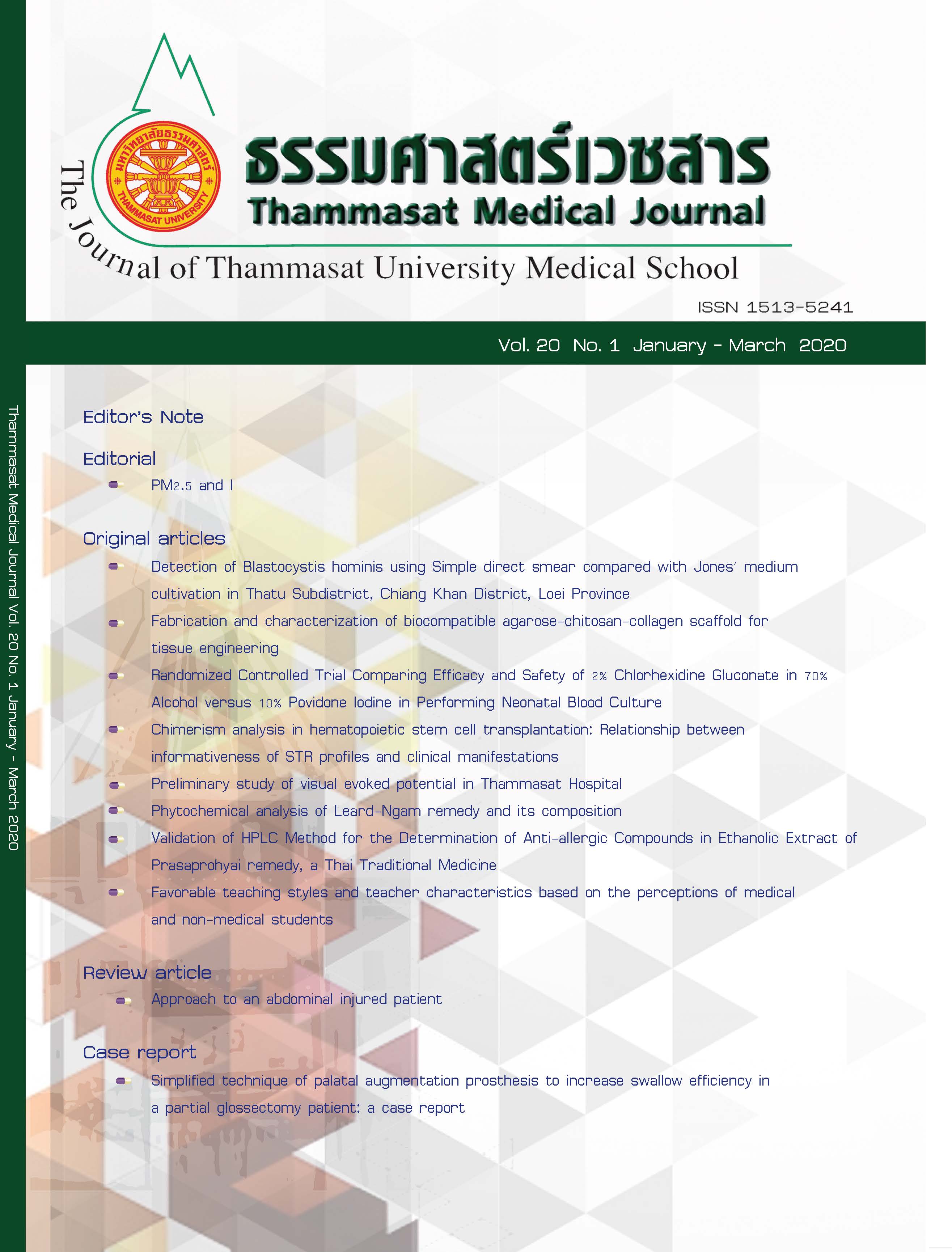Chimerism analysis in hematopoietic stem cell transplantation: Relationship between informativeness of STR profiles and clinical manifestations
Keywords:
Chimerism analysis, Hematopoietic cell transplantation, Informative STR loci, Clinical manifestationAbstract
Objective: The study was aimed to assess the relationship between short tandem repeat (STR) chimerism analysis and clinical manifestations of hematopoietic cell transplantation (HCT). The practical
informative STR loci were evaluated for number, marker, mixed chimerism pattern, post
transplanted day and recipient-derived percentage in Thai post-HCT patients.
Method: The retrospective cohort included STR chimerism analytical results of 149 post-HCT patients with malignant and non-malignant hematological diseases at Department of Forensic Medicine, Faculty of Medicine Siriraj hospital during 2012-2018. Data was collected pre-HCT/ post-HCT recipient’s and donor’s STR profiles, type of diseases, recipient-donor relationship, post- transplanted day and clinical manifestations.
Result: The mixed chimerism (MC) related to the major group such as GVHD, relapse, rejected and cytopenia in both malignant and non-malignant diseases. The practical informative loci were higher correlation to major I group and anemia than theoretical informative loci (P<0.001). Average number of practical informative loci was 4 from 10 theoretical loci. Detection limits were 4.98% in bone marrow and 6.06% in peripheral blood. The first MC detection represented at day 16 in malignant and day 21 in non-malignant. The chimerism workup period was optimized at 2 weeks to 3 months. The sensitivity and specificity of STR chimerism test were 88.61% and 81.43%.
Conclusion: This study proved that informative STR profiles associated with major clinical manifestations.



